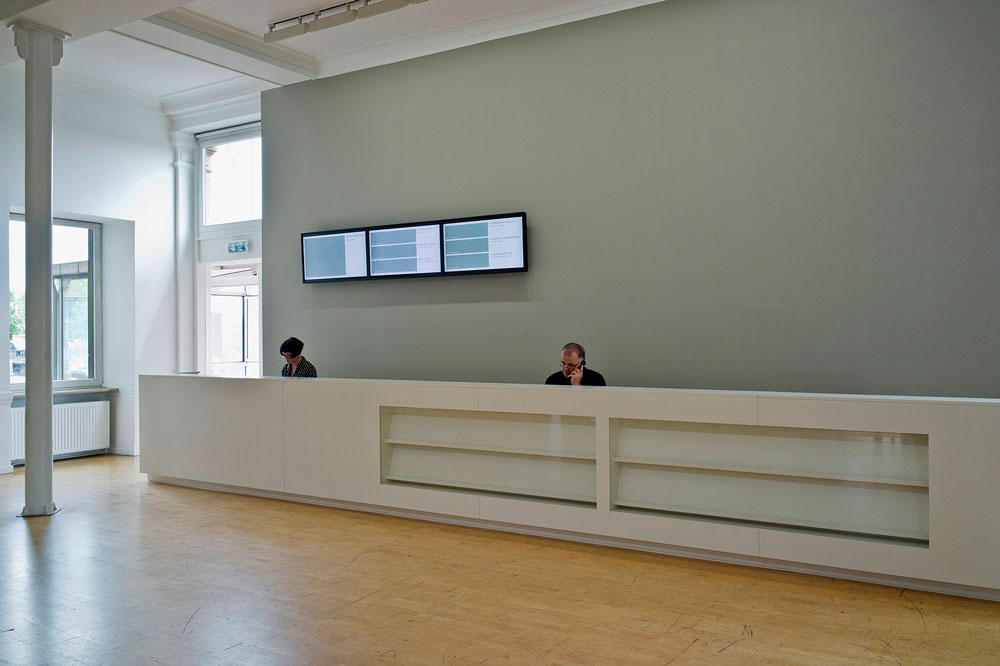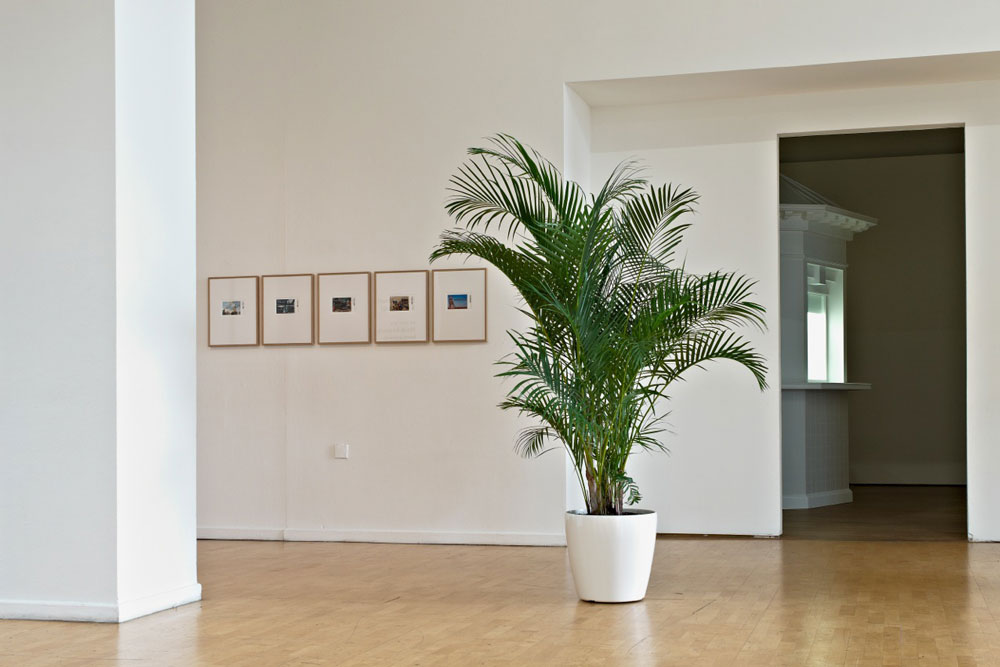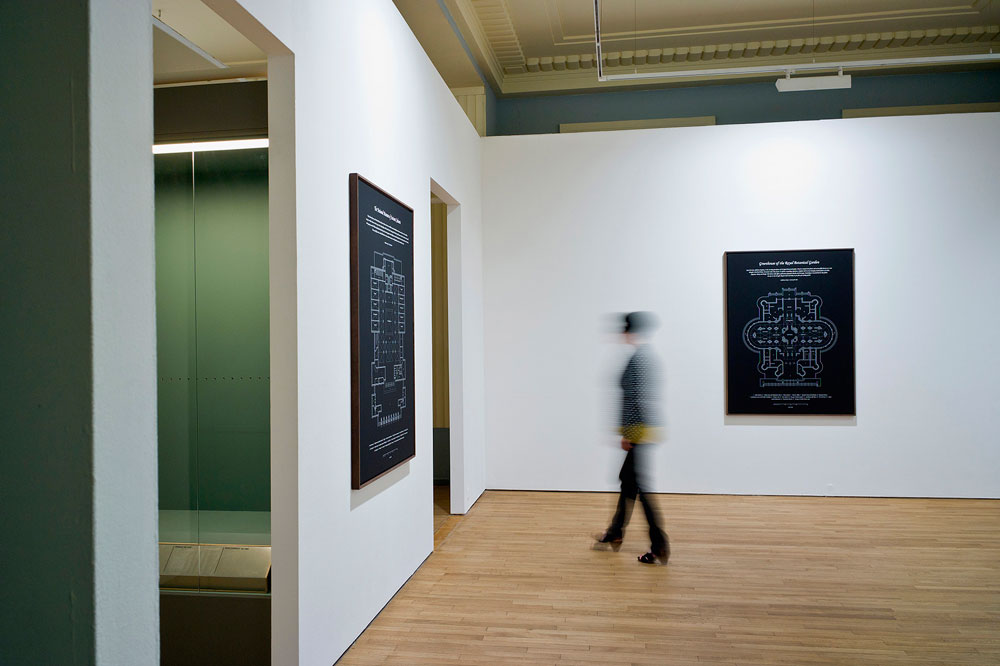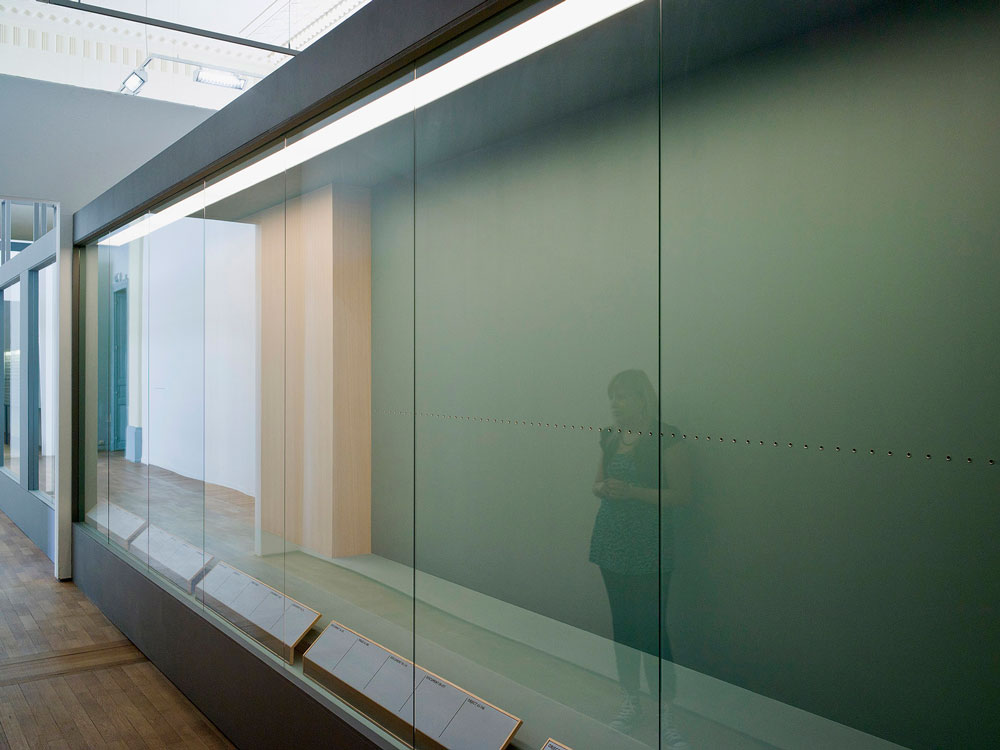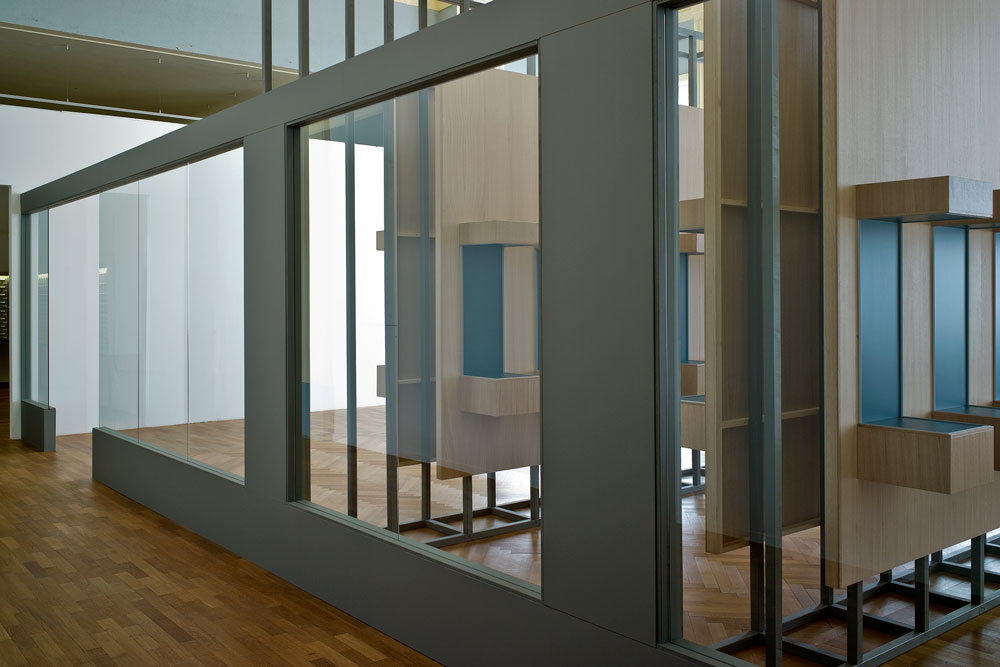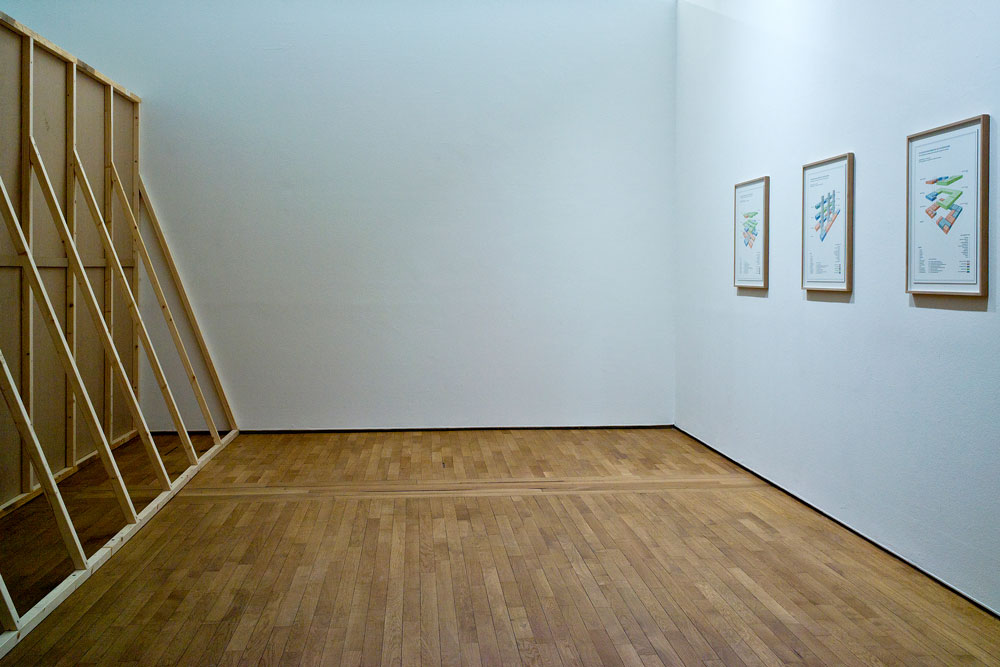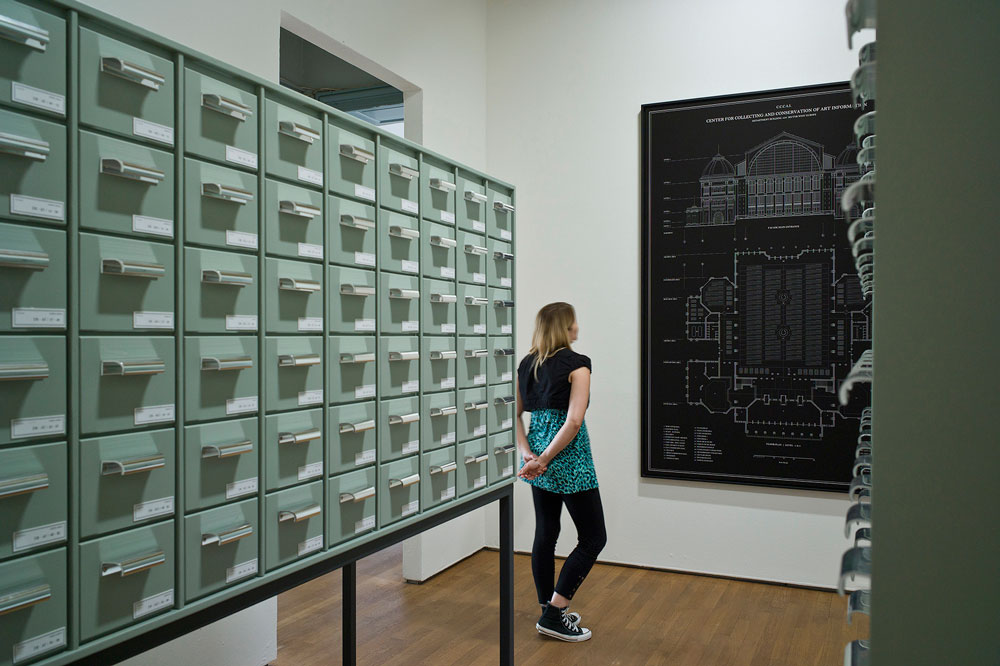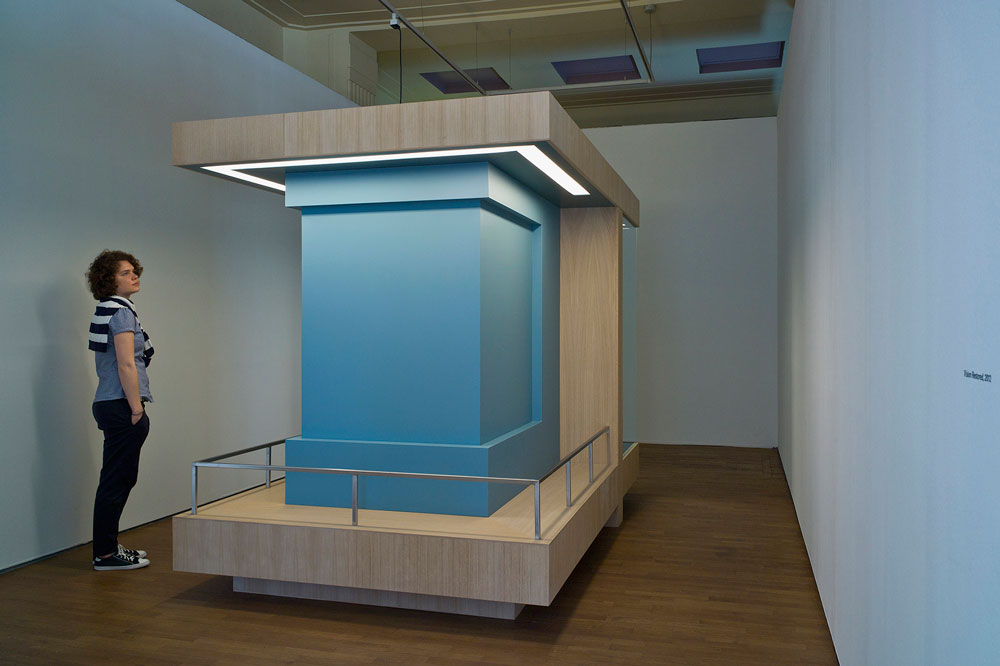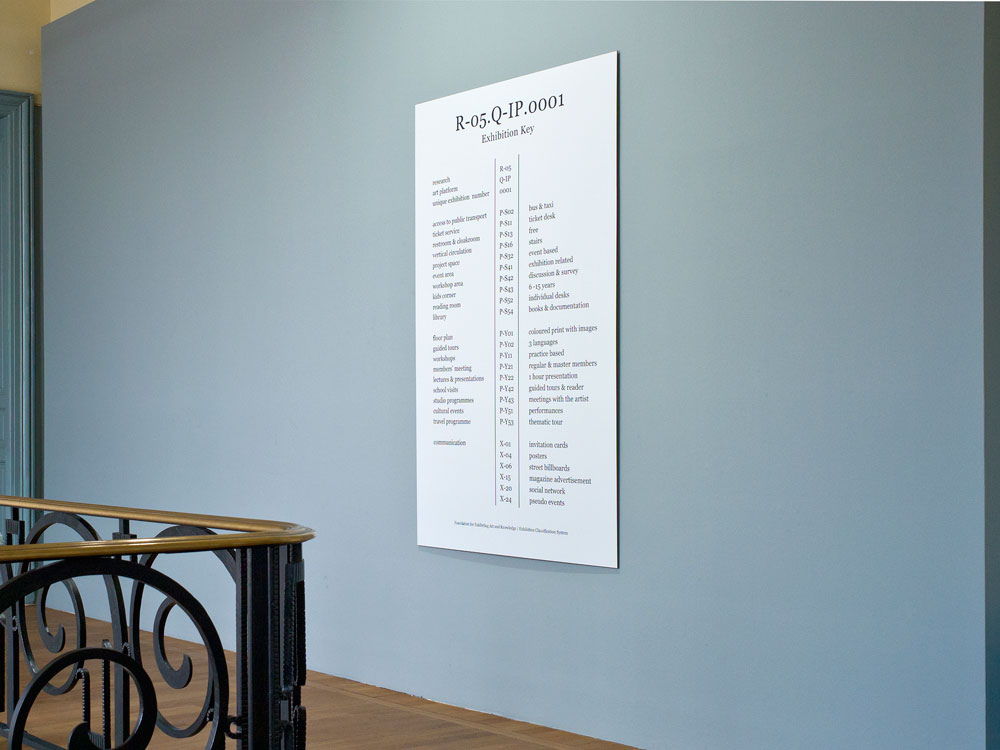R-05.Q-IP.0001 – Casino Luxembourg forum d’art Contemporain
Exhibition views12 May - 2 September 2012
Curator: Kevin Muhlen
Photo: H. Beurel
The world is full of norms, and exhibitions are no exception to the rule. Here the word “exhibition” refers not only to the project carried out at Casino Luxembourg by Wesley Meuris but should also be understood in the wider sense of the term: “exhibition” as a form of presentation. Indeed, museum display entails a certain number of rules and practices that determine how the audience will perceive the objects on show. Subsequent to developments in aesthetic and scientific interests and exhibitions over the centuries, such displays have become increasingly associated with theatrical set design and its artifices. The public’s perspective on an exhibition has therefore adapted itself to these established codes, the better to appreciate works presented according to the curators’ wishes. Wesley Meuris addresses this issue in an analytical, deconstructive way. What interests him is not to be found in the display cases or other presentational modules. He ignores the actual objects presented and enhanced through various types of artifice and staging, going so far as to entirely eliminate content. Meuris thereby makes the container the true content of his work. What he seeks to explore and expose is the physical and intellectual space that surrounds the objects. His art differs from pure museography (and museology) through his decision to employ concepts as mere points of departure for the production of a pseudo-scholarly, falsely universal discourse. So it is ultimately not surprising that the title of his show is a code—R-05.Q-IP.0001— which points toward a matric system developed by Meuris and deployed here in the Casino. And yet the code itself remains undecipherable. In the reception area, the public is thrust into a codified, standardized universe. In conventional museum design, the entrance area takes specific considerations into account, for it plays a primordial role in the way visitors approach the venue. Here that space is stripped of all content, yet its role remains clearly identifiable—there is no doubt over the nature of this zone as (re)defined by Meuris.1 Everything is present, from the streamlined counter to flat screens displaying information—which here is limited to generic text—down to the magnificent plants that lend a certain weight to this threshold area.
The deliberate sparseness—Meuris’s signature style—reveals what usually escapes the gaze, bringing the purely functional form of the entrance hall into view. Without overtly acknowledging it, this “no man’s land” already actively participates in the experience of the show. By manipulating the way the exhibition venue normally functions, Meuris is clearly trying to tell visitors that they are entering a thoroughly normalized systems
The first thing you notice as you move through the rooms is that all the display cases are empty. The reception area already laid the cards on the table by presenting visitors with a stereotyped, standardized reorganization, and the adjacent rooms continue to play this game. Retaining the museum-design spirit, all the glass cases here are perfectly executed, from laminated glass and wood trim down to the lighting— they are veritable “jewelry cases” for displaying all kinds of “precious” objects. And yet they remain forever empty, because Meuris has transformed these presentational modules into the very content of the show. The items usually contained in a display case are far from innocuous. And even if the display cases here are left empty, they were designed by Meuris for the same purpose of exhibition, conservation, and protection that apply to the objects they are supposed to contain. However, Meuris does not go so far as to reproduce the conditions of conservation and lighting exactly, for his point is not the perfect reproduction of a functional display system. Instead, he underscores—and creates a new synthesis of—the conditions generated by the system, which leads to an analysis of those active mechanisms and yields a content that is admittedly virtual yet all-the-more present.
At first sight, these display modules all seem identical with their glass surfaces and lighting. And yet each one occupies the surrounding space differently, inviting a very specific circulation and interpretation. They were therefore designed not merely to enhance an object on display but also to condition the way that object is approached and viewed. Thus the main installation, Vision Restored, comes across as an autonomous piece of sculpture placed in the middle of the room, accessible from all four sides. Its position was determined by the view from the doorways, creating a “two-stage discovery.” Compare two magnificent pieces of the collection incorporates the exhibition gallery in question, which required conversion work in order to fulfill its role and to allow visitors to enter the module. Unlike the previous example, the room that hosts the module plays a defining role in its conception. A little further on is a third example. Story of a Unique Exhibition represents a more modulable system because it can host either “families” of artifacts or thematic groups. Here it is not so much a question of enhancing an individual object as creating a defined space that makes it possible to develop a subject. A purely frontal reading gives way to a veritable interpretation of the content via related series and associations. The absence of objects in Meuris’s work is not intended to criticize exhibition policies or the cult of objects that so mark today’s society. Nor is the artist seeking to produce a scientifically correct and unimpeachable discourse. His modus operandi involves “diverting” a gaze that has been conditioned by mechanisms of presentation, classification, and communication.
